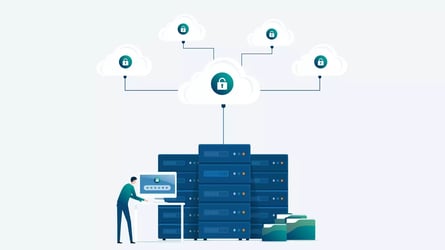This is part two of five in a series on Ransomware that will discuss Canadian trends, why Canadian organizations are so susceptible to attacks and why your strategy needs to change to adapt to the ever-changing world of ransomware.
A recent Osterman report cited in IT world Canada found that 51 per cent of Canadians feel “fairly confident” in their ability to stop ransomware. However, this may be a false sense of security as 72 per cent of Canadian companies suffered a security attack within the last 12 months. So this raises the question: are Canadian companies really prepared for ransomware? The simple answer to this question is no…however the reasons behind that answer appear to be more complex.
Although we’re neighbours, Canadian and American companies are not as similar in the way that they are targeted by malicious attacks as they are in other situations. As a matter of fact, if you were to do a comparison, Canadians are actually the outliers to the typical ways other regions are attacked by ransomware and cybercriminals.
So what makes Canadian companies such a good target for malicious attacks? Canadian businesses are 75 per cent more likely to pay a ransom than other regions. The most recent example was shown in late 2016 from the University of Calgary which paid $20,000 in bitcoin currency after some of their systems were attacked. So whether Canadian companies are either more wary about breaking news reports citing that they’ve fallen victim to ransomware, or Canadian companies do not have the necessary backup solutions in place in order to avoid paying these ransoms, Canadian organizations are just as susceptible to malicious attacks just like any other global organization. While these two issues are not mutually exclusive, solving the latter of these issues is an easy way to fix the former.
The key to Canadian businesses fighting ransomware is better educating themselves on the causes of these attacks. While typical international findings citing email being the number one cause of ransomware vulnerability, Canada debunks these findings as business applications are the most common vector for spreading ransomware throughout an organization.
In 2017, make sure that your company is prepared to fight off malicious attacks from Ransomware. To learn more about how you can prepare your company against ransomware, take a look at our previous blog to find out three reasons why your IT strategy needs to change in order to better adapt to ransomware.




